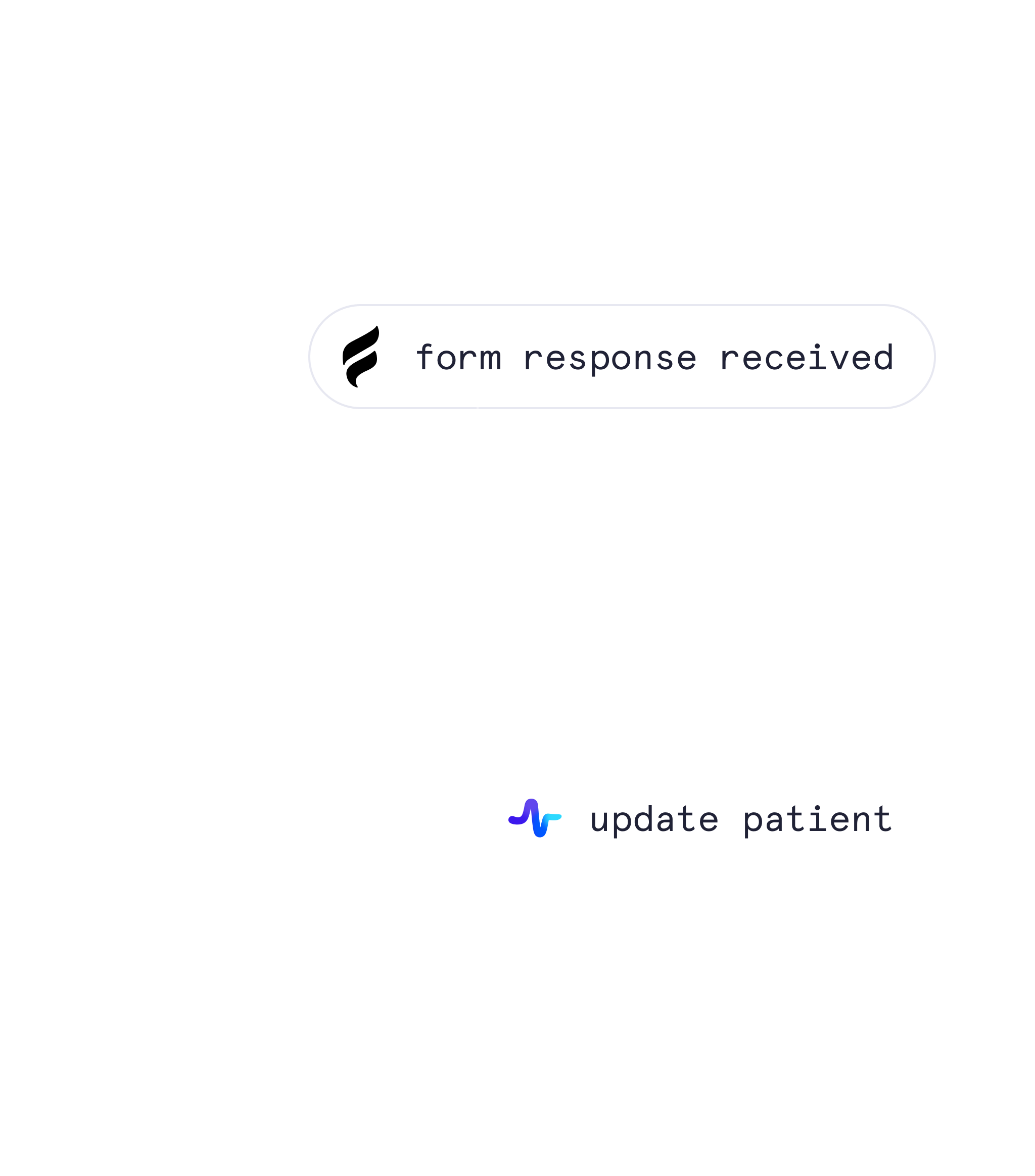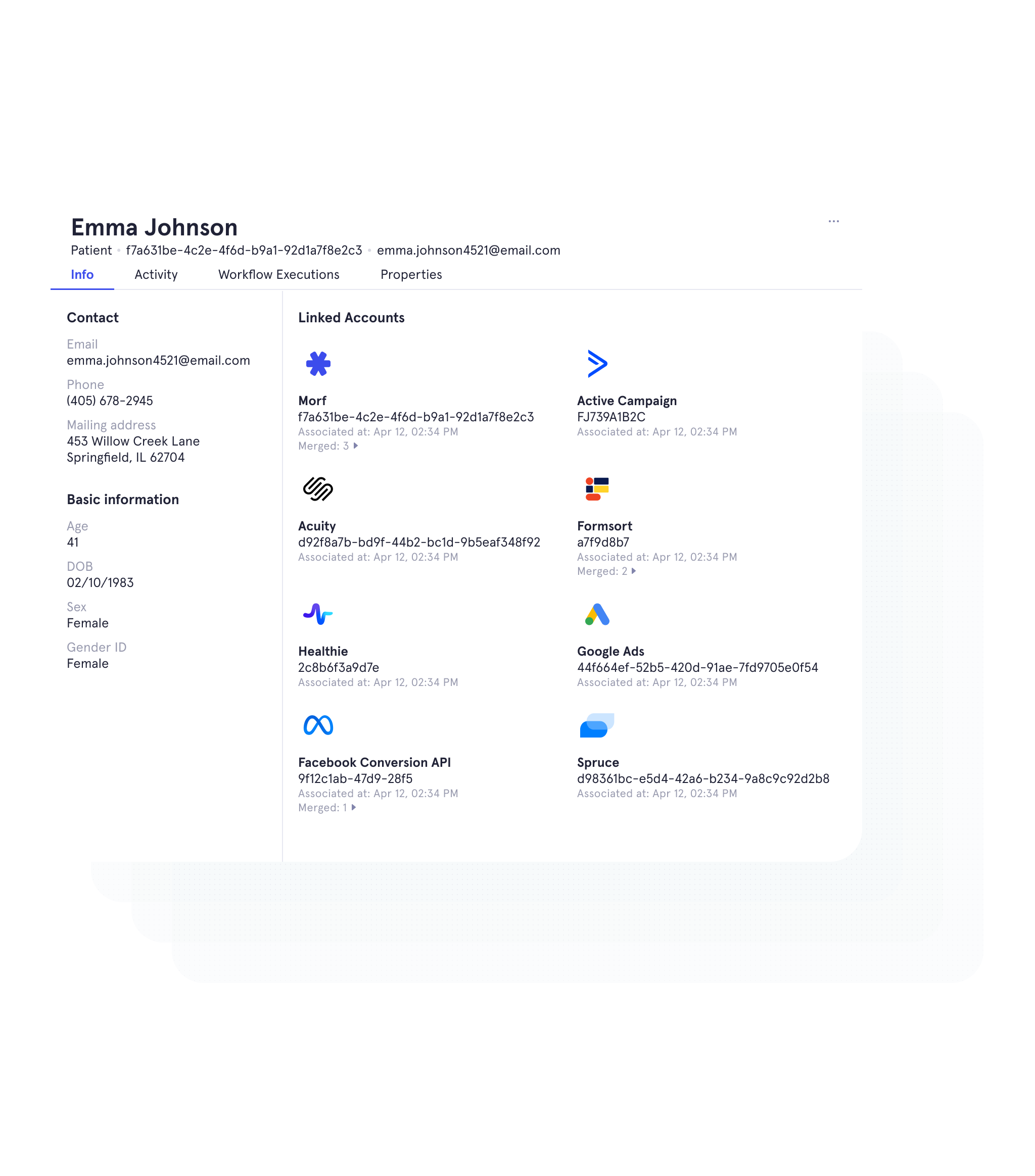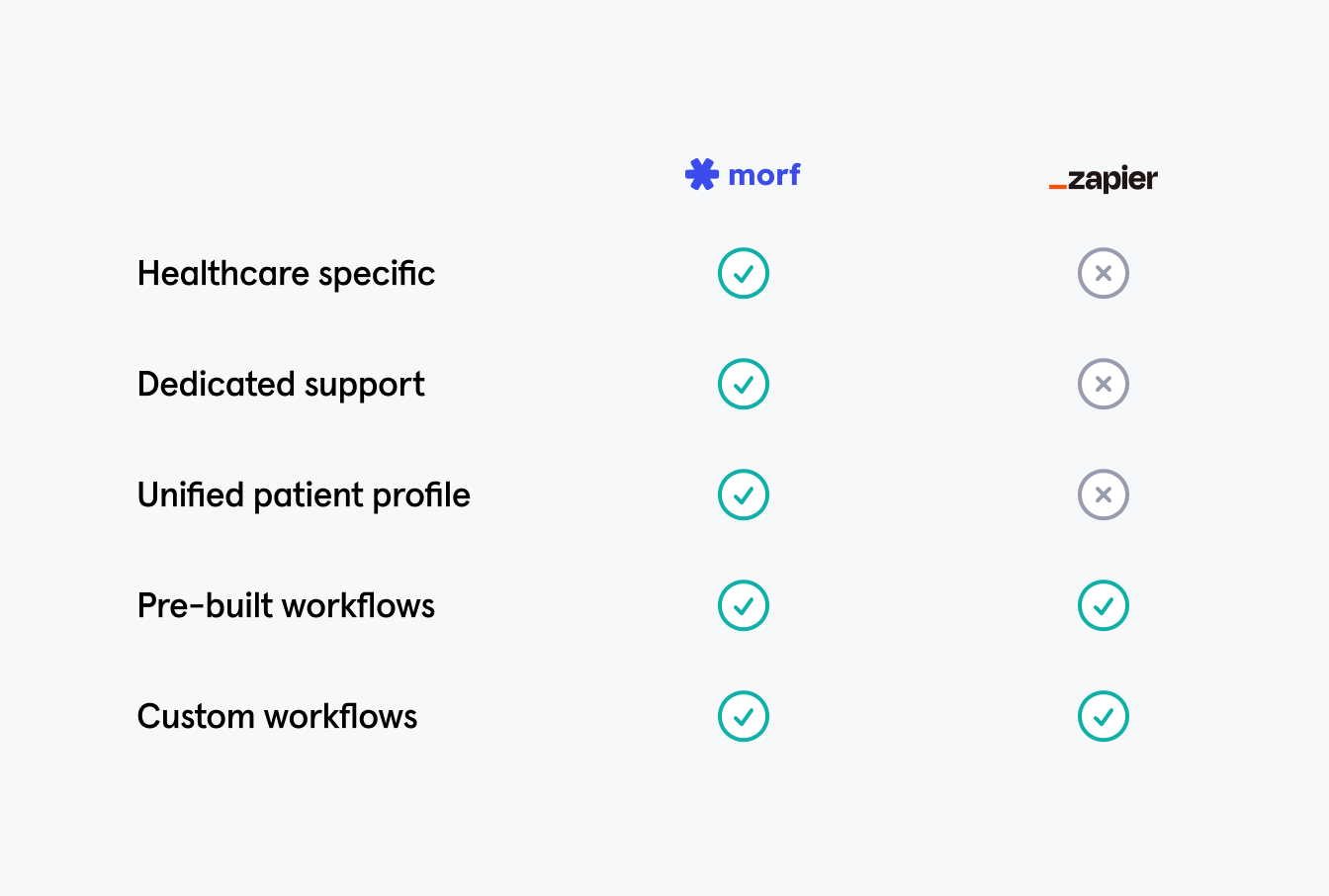Morf automates your workflows and puts patient communication on auto-pilot
So, what’s a workflow?
It’s sort of like writing code, except not at all. Select or create a triggering event, decide what action you want to have happen, and let Morf do the rest.
1
Identify a trigger
A trigger kicks off a workflow. For example, if you want to create a new patient record in your EHR when a patient completes a step in your Formsort sign-up flow, the trigger would be `step_completed`.
2
Perform an action
An action is what happens when the trigger occurs. Using the example above, the action here is `create_patient_record` in Healthie. Morf automatically takes the info from Formsort and populates in in Healthie, with zero manual input.

Easily keep patient data in sync across platforms
Morf takes the complexity out of automation by managing and matching patient identities across your third-party tools for you.
Update profiles
Morf can read from and write data to other platforms, and maintains a reliable source of truth.
Merge & de-deduplicate
Keep your data clean. Morf will match patient profiles and help your team sort out conflicting metadata.

Get a complete view of your patient
One patient, one profile, one platform: any event or data processed for a patient is associated to a single profile in Morf, giving you a holistic, unified view of your patients’ data and activity.

Secure patient data without limiting your capabilities

Flexible data backfills
Seamlessly swap out vendors and replay historical data

HIPAA-compliant
Complete control and security of your patient health information.

FHIR-compatible
Map your data to the FHIR standard for interoperability.
Seamlessly add new tools as your needs change
As you grow and evolve, chances are you’ll want to experiment new tools that better serve your needs. Morf allows you to easily swap out vendors and migrate your data — no coding required.
Meet Flo AI: Your Workflow Co-Pilot
Flo AI makes automation effortless. Describe what you need, and Flo builds it — instantly.
Build Without Barriers
Create and update automations instantly — no code, no waiting, no back-and-forth.
Launch in Minutes
Turn a manual process into a working workflow in moments with Flo’s guided setup.
Improve Continuously
Flo is always available to answer questions, suggest optimizations, and evolve your workflows.
Scale Effortlessly
Multiply your team’s impact — automate more processes, faster, across your practice.
How does Morf compare?

Healthcare specific
Morf is made by a team with extensive experience working in healthcare. Zapier is a general purpose platform that simply doesn’t account for the unique nature of clinical operations.
HIPAA compliant
Protect patient privacy and market with confidence that you’re not at legal risk. Morf strips out PHI and doesn’t rely on third-party pixels like Meta and GA4.
Ready to get started with Morf?
1
Evaluation
Meet your support team in a discovery call! They’ll be your go-to resource, and will get you started by integrating Morf with your existing tools.
2
Workflow selection
Select from a list of popular workflow automations for your business, or work with an expert to translate your ideas into totally custom workflows.
3
Implementation
Our team handles all of the initial work, setting up your workflows and making sure all of the automations are working as intended.
4
Launch & optimization
When it’s time to launch, we’ll hand the keys off to you, and you’ll be able to benefit from automation on day one — and test & iterate to improve going forward!
See Morf in action
Transform how you manage patient operations. Schedule a Demo today and discover how Morf can help you streamline workflows, personalize patient experiences, and grow your healthcare business.